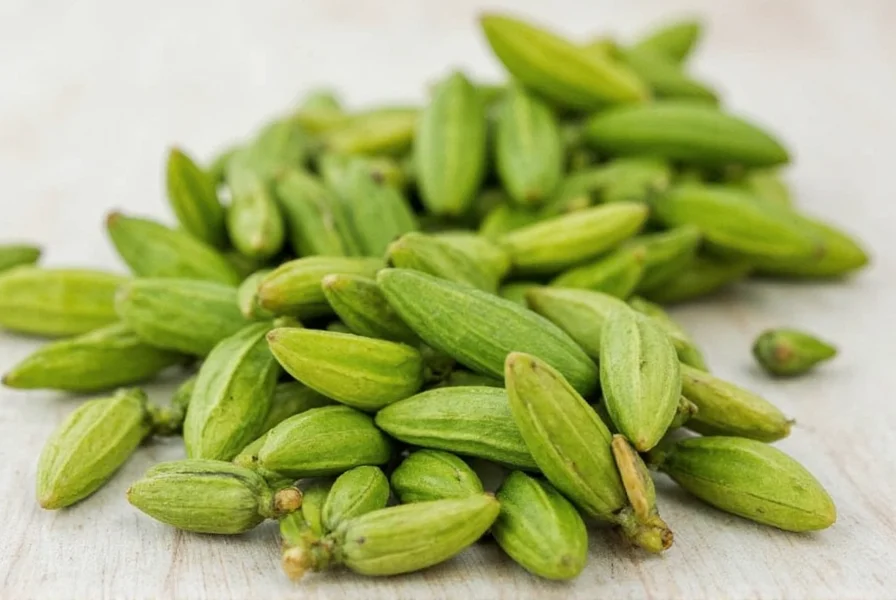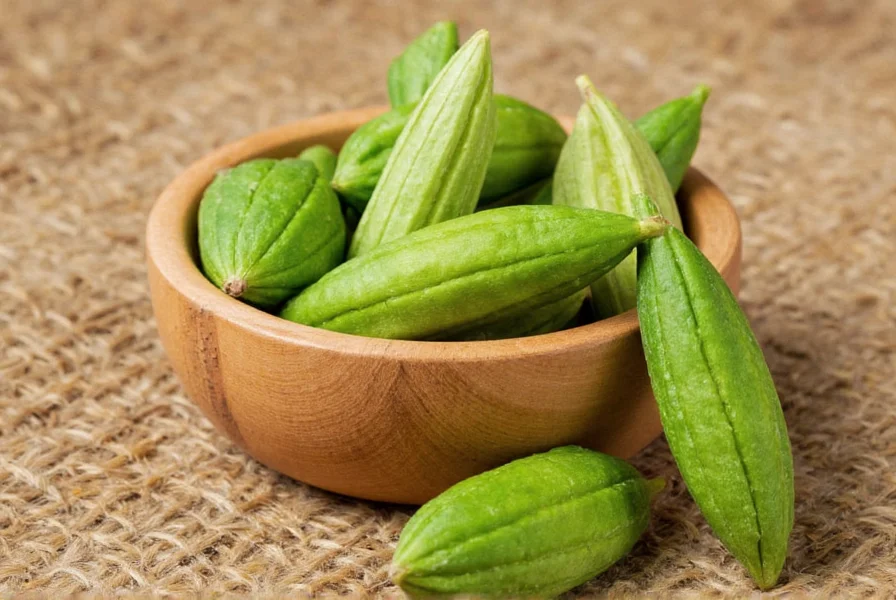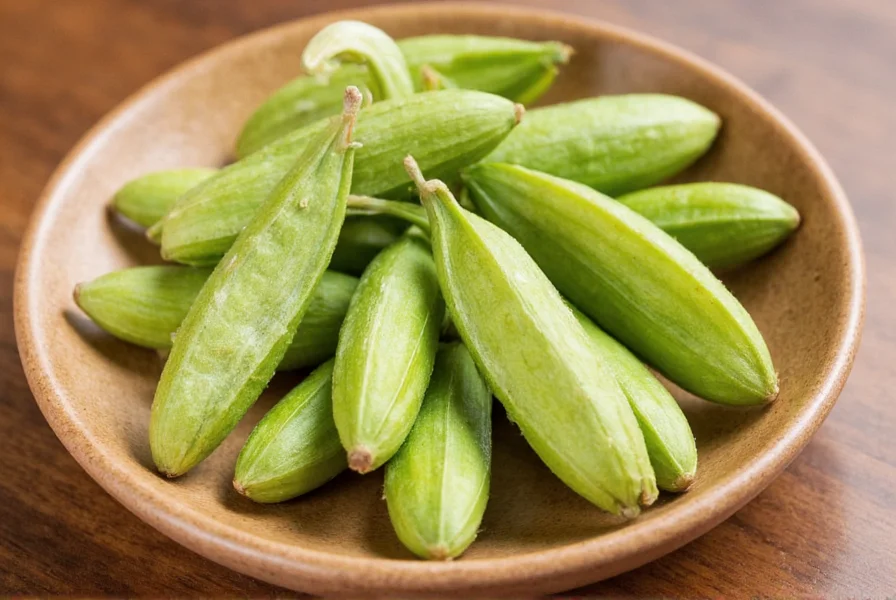Cardamom ranks as the world's third most expensive spice after saffron and vanilla, yet its complex flavor profile has made it a kitchen staple across cultures for centuries. This comprehensive guide explores everything you need to know about selecting, using, and appreciating this versatile spice in your cooking and wellness routines.
Understanding Cardamom Varieties
While "cardamom" typically refers to green cardamom in Western contexts, multiple varieties exist with distinct characteristics. The two primary types—green and black cardamom—serve different culinary purposes and originate from separate botanical families.
| Characteristic | Green Cardamom | Black Cardamom |
|---|---|---|
| Botanical Name | Elettaria cardamomum | Amomum subulatum |
| Flavor Profile | Sweet, floral, citrusy, eucalyptus notes | Smoky, camphorous, menthol-like |
| Primary Growing Regions | India, Guatemala, Tanzania | Nepal, Bhutan, North India |
| Best Culinary Uses | Baking, desserts, coffee, rice dishes | Curries, stews, braises, spice blends |
| Storage Life (whole) | 1-2 years | 6-12 months |
Maximizing Cardamom's Flavor Potential
Professional chefs and home cooks achieve superior results with cardamom by understanding proper handling techniques. Whole pods maintain freshness significantly longer than pre-ground spice—the essential oils responsible for cardamom's distinctive aroma begin degrading immediately after grinding.
For optimal flavor extraction when using whole pods:
- Gently crush pods with the flat side of a knife to release seeds
- Add whole pods early in cooking for savory dishes to infuse flavors
- Remove pods before serving as they're unpleasant to bite into
- For baking, remove seeds from pods and grind fresh just before use
When substituting ground cardamom for whole pods, use this conversion: 10 cardamom pods equal approximately 1½ teaspoons of freshly ground spice. This precise measurement ensures proper flavor balance in recipes like Scandinavian pastries or Indian biryanis.

Scientifically Supported Health Benefits
Research published in the Journal of Agricultural and Food Chemistry confirms cardamom contains potent antioxidants including flavonoids and terpenes. These compounds demonstrate measurable anti-inflammatory effects in clinical studies. Unlike many "superfood" claims, cardamom's digestive benefits have substantial scientific backing—multiple studies show it stimulates digestive enzymes and may help reduce symptoms of IBS.
Traditional Ayurvedic medicine has utilized cardamom for centuries to address:
- Digestive discomfort and bloating
- Oral health maintenance (natural breath freshener)
- Respiratory support through expectorant properties
- Balancing blood pressure levels
Modern research partially validates these traditional uses, particularly regarding digestive health. A 2022 clinical trial demonstrated that participants consuming cardamom extract experienced significantly reduced gastric discomfort compared to placebo groups.
Global Culinary Applications
Cardamom's versatility shines across world cuisines. In Scandinavian baking, it flavors traditional Christmas cookies and sweet buns. Middle Eastern coffee often includes cardamom pods during brewing for aromatic complexity. Indian cuisine uses both green and black varieties—green in desserts like kheer and black in savory dishes like biryani.
For home experimentation, try these authentic applications:
- Add 3-4 crushed green cardamom pods to rice while cooking for fragrant basmati
- Infuse black cardamom in ghee for authentic Indian curry base
- Grind with coffee beans for traditional Middle Eastern coffee preparation
- Create cardamom sugar by blending pods with sugar for baking applications

Storage and Selection Guide
Selecting quality cardamom requires attention to detail. For green cardamom, choose plump, olive-green pods that feel heavy for their size—lightweight pods indicate dried-out seeds. Avoid pods with visible cracks or excessive browning. Black cardamom should have intact, dark brown pods with a pronounced smoky aroma when crushed.
Proper storage extends cardamom's shelf life dramatically:
- Store whole pods in airtight glass containers away from light and heat
- Refrigeration can extend freshness to 2 years for green cardamom
- Freeze pods for long-term storage (up to 3 years)
- Grind only what you'll use within 2 weeks for maximum flavor
When evaluating freshness, crush a seed between your fingers—a strong, pleasant aroma indicates quality, while weak or musty smells suggest stale product. This simple test helps determine whether your cardamom has retained its essential oils.
Common Substitutions and Solutions
Running out of cardamom doesn't have to ruin your recipe. While no substitute perfectly replicates cardamom's unique profile, these alternatives work in specific contexts:
- For baking: Combine equal parts cinnamon, nutmeg, and ginger
- For savory dishes: Use a pinch of cumin with star anise
- For coffee: Try a small amount of allspice or cloves
Remember that cardamom's flavor intensifies during cooking, so when experimenting with substitutes, start with half the recommended amount and adjust to taste. Understanding how to properly use cardamom alternatives ensures your dishes maintain balance even when this specialty spice isn't available.
Frequently Asked Questions
What's the difference between green and black cardamom?
Green cardamom (Elettaria cardamomum) has a sweet, floral flavor ideal for baking and desserts, while black cardamom (Amomum subulatum) offers a smoky, camphorous taste better suited for savory dishes. They come from different plant species and shouldn't be used interchangeably in recipes requiring authentic flavor profiles.
How can I tell if my cardamom is still fresh?
Fresh cardamom pods should feel heavy for their size and release a strong, pleasant aroma when crushed. Split a pod and examine the seeds—they should be moist and oily, not dry or powdery. If the seeds crumble easily or lack aroma, the cardamom has lost its potency and should be replaced.
Can I substitute ground cardamom for whole pods?
Yes, with proper conversion. Ten cardamom pods equal approximately 1½ teaspoons of freshly ground cardamom. Pre-ground cardamom loses potency faster, so use 25% more if using store-bought powder. For best results, grind whole seeds just before use rather than relying on pre-ground spice.
Does cardamom have scientifically proven health benefits?
Research confirms cardamom contains potent antioxidants and demonstrates anti-inflammatory effects. Clinical studies show it may improve digestive function and reduce symptoms of IBS. Unlike many spice health claims, cardamom's digestive benefits have substantial scientific backing, though more research is needed on other potential health effects.
How should I store cardamom to maintain freshness?
Store whole cardamom pods in an airtight glass container away from light and heat. Refrigeration extends freshness to 2 years for green cardamom, while freezing preserves quality for up to 3 years. Avoid storing near strong-smelling foods as cardamom readily absorbs odors. Never store ground cardamom for more than 2 weeks as it loses flavor rapidly.











 浙公网安备
33010002000092号
浙公网安备
33010002000092号 浙B2-20120091-4
浙B2-20120091-4